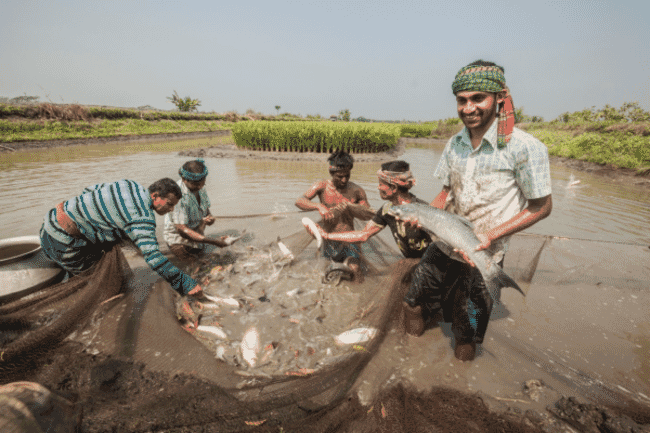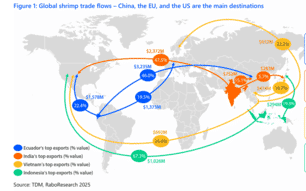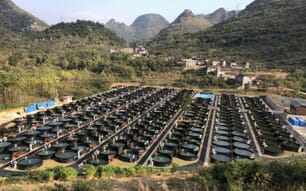
© ByteAlly
Following on from his presentation of projected production figures, which he delivered at the recent GOAL 2020 conference, Nikolik delved in more detail about the species and regions in which he saw the greatest growth prospects – the rising stars of the finfish aquaculture sector.
“You can essentially divide the finfish aquaculture world into three main groups. The first consists of salmonids, seabass and sea bream. These are doing well, but there are serious constraints on their growth – in particular the limited supply of licences available. These species are mainly farmed in the West and face pretty heavy environmental regulations, due to environmental concerns and – until RAS and offshore farming truly arrive – I don’t see more than minimal growth rates. They’re mature sectors and 1-5 percent growth per year is the maximum,” argues the Rabobank seafood analyst.
The second group consists of the major carp species, says Nikolik, and – like salmon – this a mature sector, which is reflected in its growth rate.
“Carp production is slowing down, particularly in China, where it’s fallen from 5-8 percent a year to 2-3 percent. Growth rates in India are fairly good still – around 5 percent, from a large base, but it is still a small industry comparing to China,” he reflects.
The third group, however, is in marked contrast to the salmonids, Mediterranean species and carps, and not just due to the diversity of species it includes.
“There are a plethora of species emerging that have two things in common – they are innovative and quite immature,” Nikolik explains.
Freshwater species
There are two well established freshwater species, which – according to Nikolik – might be quite mature but are poised for something of a renaissance.
“Tilapia and pangasius have a very interesting story at the moment. Initially they were produced primarily to be exported – with China growing tilapia for the US market and Vietnam growing pangasius for export to both the US and the EU,” he notes.
“However, all this has changed, with the EU market for pangasius declining over the course of the last decade and the US market for Chinese tilapia declining [in the wake of the US-China trade wars] since 2018,” he adds.
As a result of these factors, as well as the impact of Covid, industry dynamics have changed.
“The most profitable and growing business model is the local-for-local production - ie producing locally for fresh consumption in the same region,” he observes.
This process has been made possible in part by the improved genetics of these species, improvements in feed supplies and global proliferation of this technology.
“Places that have a good climate, a good feed supply, access to water and a large local market are – such as India, Brazil and Bangladesh – are growing the most quickly,” Nikolik notes. “And they’re growing in many markets – I can see tilapia production in Sub-Saharan Africa growing very quickly, for example. People there see it as an excellent quality fish and the price has been dropping – from $5-6 per kg to $2-3 per kilo, meaning that it can now almost compete with chicken”.

Marine species
While increases in tilapia and pangasius production have largely being driven by an increase in local demand, the uptick in production of a variety of marine species has a different root cause, according to Nikolik.
“Wild capture landings have decreased for many popular marine species – species that have a good image and can achieve a good market price, but which consumers struggle to source. But technology is making it increasingly possible to farm these species – thanks to improvements in the availability of factors such as good feed, good genetics, farming technology and improved cold chains. Some of these advances have come from the salmon sector, some from shrimp and some are home-grown,” he explains.
While there is a wide range of species in this category, there are two Nikolik singles out for their particular potential.
“Stiped bass is one of them. These are being produced by companies such as Pacifico, in northern Mexico. I think it’s a species and a company with a lot of potential. The farm is close to the US, it’s a known and popular species, they have a good hatchery, access to good feed, excellent sites and plenty of biomass in the water,” notes Nikolik.
“The other is yellowtail kingfish. Rabobank is both a lender and an equity investor in The Kingfish Company. It’s a very high value fish and is very well suited to both Japanese (in raw form) and Italian (in seared form) cuisine – both of which have a global reach. It also has no competition in terms of being able to provide a constant supply of very good quality, very uniform product that can be harvested whenever it’s needed, without being frozen or flown anywhere. The ability to deliver fresh product every day is the only way to develop a successful species – wild-catch can’t compete,” Nikolik argues.
While there are still questions to be answered Nikolik is clearly excited by a range of developments in the finfish aquaculture sector – be it the growth of tilapia for local consumption in Brazil, Bangladesh or Sub-Saharan Africa, or the emergence of an international market for high end marine species, he’ll certainly be paying attention to these fields in the years to come.







